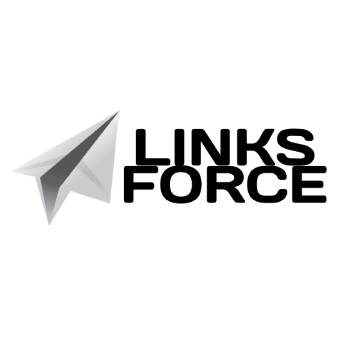
In the realm of remote work, clear communication stands as the cornerstone of effective collaboration. When we operate from different locations, the nuances of face-to-face interactions are often lost, making it imperative for us to articulate our thoughts and ideas with precision. We must recognize that miscommunication can lead to misunderstandings, project delays, and a general sense of disconnection among team members.
By prioritizing clarity in our communications, we can foster an environment where everyone feels informed and engaged, regardless of their physical location. Moreover, we should embrace various communication tools that facilitate dialogue among team members. Whether through video calls, instant messaging, or collaborative platforms, we have the opportunity to choose the medium that best suits our needs.
Regular check-ins and updates can help us stay aligned on project goals and individual responsibilities. By establishing a culture of open communication, we not only enhance our productivity but also create a sense of belonging within our remote teams.
Establishing Trust and Accountability
Trust is the bedrock of any successful team, and in a remote setting, it becomes even more crucial. We must actively work to build trust among team members by being transparent in our actions and decisions. This involves sharing information openly and being honest about our capabilities and limitations.
When we demonstrate reliability in our commitments, we encourage others to do the same, creating a cycle of accountability that strengthens our team dynamics. Accountability goes hand in hand with trust. We should establish clear roles and responsibilities for each team member, ensuring that everyone understands their contributions to the collective goals.
Regular feedback sessions can help us hold each other accountable while also providing opportunities for growth and improvement. By fostering an environment where accountability is valued, we empower each other to take ownership of our work, ultimately leading to higher levels of performance and satisfaction.
Setting Clear Expectations and Goals
To navigate the complexities of remote work effectively, we must set clear expectations and goals from the outset. This clarity helps us align our efforts and ensures that everyone is on the same page regarding project objectives. We should collaboratively define what success looks like for each task or project, breaking down larger goals into manageable milestones.
This approach not only makes our objectives more attainable but also allows us to celebrate small victories along the way. Additionally, we should encourage open discussions about these expectations to ensure that they are realistic and achievable. By involving all team members in this process, we can tap into diverse perspectives and insights that may enhance our overall strategy.
As we progress, it’s essential to revisit these goals regularly, adjusting them as necessary to reflect changing circumstances or new information. This adaptability will keep us agile and focused on delivering results.
Utilizing Technology for Collaboration
In today’s digital age, technology serves as a vital enabler of collaboration among remote teams. We have access to an array of tools designed to facilitate communication, project management, and information sharing. By leveraging these technologies effectively, we can streamline our workflows and enhance our collaborative efforts.
For instance, project management software allows us to track progress in real-time, assign tasks, and set deadlines, ensuring that everyone remains accountable for their contributions. Moreover, video conferencing tools have revolutionized the way we connect with one another. They allow us to engage in face-to-face conversations despite physical distances, fostering a sense of camaraderie among team members.
We should also explore collaborative platforms that enable simultaneous editing of documents or brainstorming sessions in virtual spaces. By embracing these technological advancements, we can create a more cohesive and productive remote work environment.
Managing Time Zones and Work Hours
One of the unique challenges we face in remote work is managing time zones and varying work hours among team members. As we collaborate across different regions, it’s essential for us to be mindful of each other’s schedules and availability. We should establish a shared understanding of core working hours when most team members are online, allowing for real-time collaboration while respecting individual preferences.
To navigate this challenge effectively, we can utilize scheduling tools that help us find suitable meeting times for everyone involved. Additionally, asynchronous communication can play a significant role in bridging time gaps. By documenting discussions and decisions in shared platforms, we ensure that all team members can stay informed and contribute at their convenience.
This flexibility not only accommodates diverse schedules but also empowers us to work in ways that suit our personal productivity rhythms.
Fostering a Positive Team Culture
Creating a positive team culture is essential for maintaining morale and motivation in a remote setting. We must actively cultivate an environment where team members feel valued and appreciated for their contributions. This can be achieved through regular recognition of individual achievements and collective successes.
Celebrating milestones together—whether through virtual gatherings or shout-outs in team meetings—can significantly enhance our sense of belonging. Furthermore, we should encourage informal interactions among team members to strengthen relationships beyond work-related discussions.
By prioritizing a positive team culture, we create an atmosphere where everyone feels empowered to share ideas, take risks, and collaborate freely.
Providing Support and Resources
To ensure the success of our remote teams, we must provide adequate support and resources tailored to individual needs. This includes access to necessary tools and technologies that facilitate our work processes. We should also consider offering training programs or workshops that enhance our skills and knowledge relevant to our roles.
By investing in our professional development, we demonstrate a commitment to our growth as individuals and as a team.
We should create channels for open dialogue about mental health and well-being, encouraging team members to share their challenges and seek assistance when needed.
By fostering a culture of support, we empower each other to navigate the complexities of remote work while maintaining a healthy work-life balance.
Encouraging Work-Life Balance
In the pursuit of productivity, it’s crucial for us to prioritize work-life balance within our remote teams. The blurred boundaries between work and personal life can lead to burnout if not managed effectively. We should encourage each other to set clear boundaries regarding work hours and personal time, promoting a culture where taking breaks is not only accepted but encouraged.
We can also implement flexible working arrangements that allow team members to tailor their schedules according to their personal commitments. By recognizing that each individual has unique responsibilities outside of work, we create an environment where everyone feels supported in achieving balance. Ultimately, when we prioritize well-being alongside productivity, we enhance overall job satisfaction and performance.
Recognizing and Rewarding Remote Team Members
Recognition plays a pivotal role in motivating remote teams and reinforcing positive behaviors. We should establish systems for acknowledging individual contributions regularly—whether through formal awards or simple gestures of appreciation during meetings. Celebrating achievements fosters a sense of accomplishment and encourages continued excellence among team members.
Moreover, we can explore creative ways to reward outstanding performance beyond traditional methods. This could include offering professional development opportunities or providing incentives such as gift cards or extra time off. By tailoring recognition efforts to align with individual preferences, we demonstrate that we value each team member’s unique contributions while fostering a culture of appreciation.
Addressing Challenges and Conflict Resolution
Despite our best efforts, challenges and conflicts may arise within remote teams due to miscommunication or differing perspectives. It’s essential for us to approach these situations with empathy and openness. We should encourage an environment where team members feel comfortable voicing their concerns without fear of retribution.
When conflicts do occur, we must address them promptly and constructively. Facilitating open discussions allows us to explore differing viewpoints while seeking common ground for resolution. By focusing on collaboration rather than competition during these discussions, we can turn challenges into opportunities for growth and understanding within our team.
Continuously Evaluating and Adjusting Remote Team Management Strategies
As we navigate the evolving landscape of remote work, it’s vital for us to continuously evaluate and adjust our management strategies based on feedback and outcomes. Regular check-ins with team members can provide valuable insights into what is working well and what may need improvement. By fostering a culture of continuous learning, we empower ourselves to adapt to changing circumstances effectively.
We should also remain open to experimenting with new approaches or tools that may enhance our collaboration efforts further. By staying attuned to industry trends and best practices in remote work management, we position ourselves for ongoing success as a cohesive unit. Ultimately, by committing to continuous evaluation and adjustment, we ensure that our remote teams remain resilient and effective in achieving their goals.
In conclusion, managing remote teams requires intentionality across various dimensions—from communication to culture-building practices. By prioritizing clear communication, establishing trust, setting expectations, leveraging technology, managing time zones effectively, fostering positivity, providing support, encouraging balance, recognizing contributions, addressing conflicts constructively, and continuously evaluating our strategies, we can create an environment where remote teams thrive together despite physical distances.
Managing remote teams effectively requires a solid understanding of various aspects of team dynamics and communication. For those looking to enhance their financial management skills while leading remote teams, the article on Complete Guide to Cash Flow Management offers valuable insights. It emphasizes the importance of maintaining a healthy cash flow, which is crucial for remote teams to thrive, especially in uncertain economic times. By integrating these financial strategies with effective remote team management practices, leaders can foster a more productive and resilient work environment.
